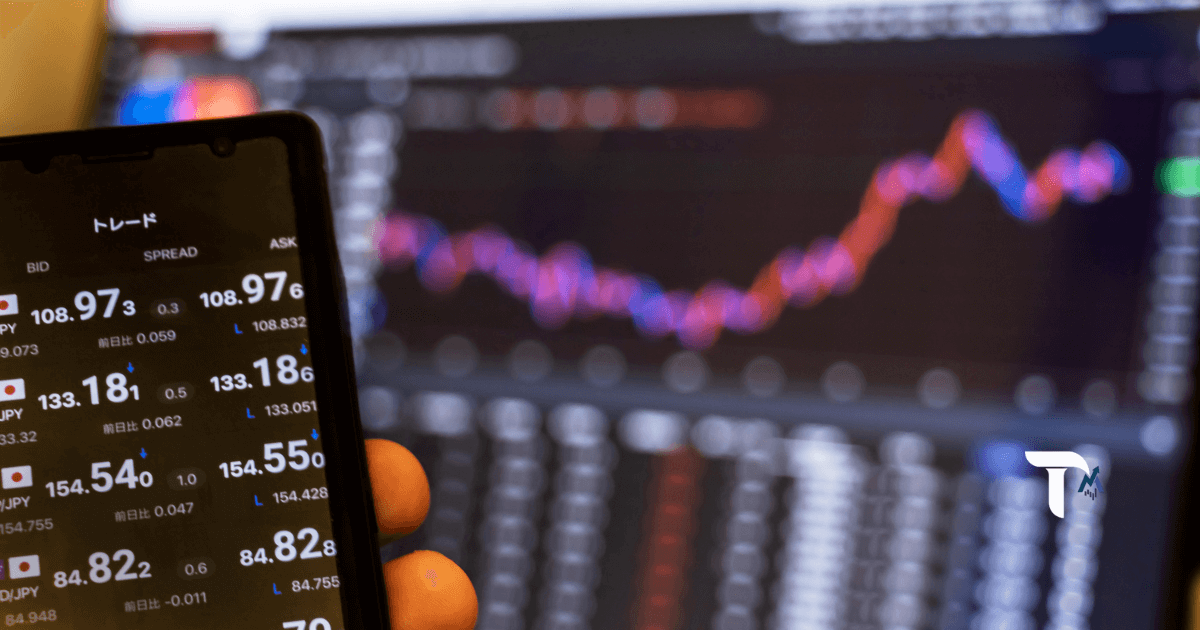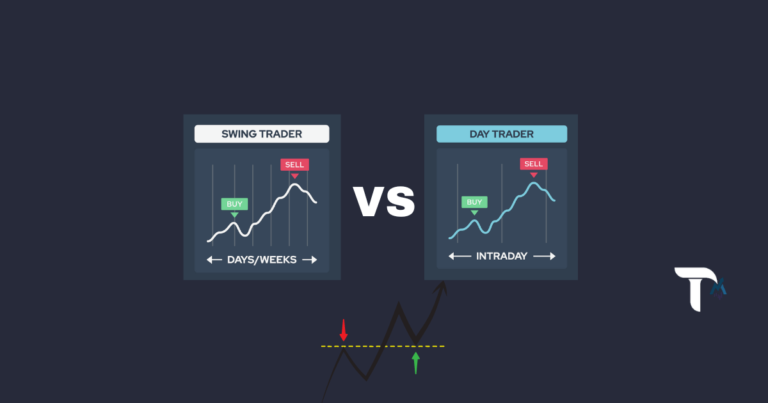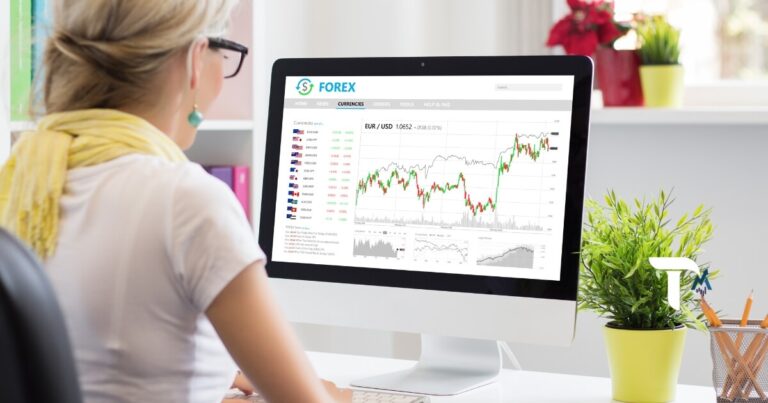What are pips in forex trading? How to calculate
In the world of forex trading, understanding the concept of pips is essential for success. Pips, short for “percentage in point,” play a crucial role in measuring price movements and determining profits or losses. In this comprehensive guide, we will delve into the depths of pips, exploring their definition, significance, calculation methods, and their relation to various aspects of forex trading. By the end of this article, you’ll have a solid understanding of what are pips in forex trading and how to leverage them effectively in your trading strategies.
- Calculate pip values accurately to determine potential profits or losses.
- Consider factors such as market volatility, economic indicators, and news events that impact pip movements.
- Differentiate between direct and indirect quotes, bid and ask prices and their relation to spreads.
- Grasp the role of leverage in forex trading and its impact on pip profitability.
- Utilize pips in position sizing, risk management, and establishing risk-to-reward ratios.
- Adapt trading strategies to different trading styles, such as scalping, day trading, swing trading, or carry trading.
- Combine pips with other trading concepts like moving averages, candlestick patterns, and oscillators for comprehensive analysis.
- Be aware of common pitfalls and challenges with pips, such as overemphasizing their importance or falling for false signals.
- Cultivate disciplined trading habits to avoid emotional decision-making and overreacting to minor pip movements.
What are pips in forex trading and its Importance?
Pips serve as a standardized unit of measurement in forex trading. They represent the smallest incremental movement in the exchange rate of a currency pair. A pip is typically expressed as a four-decimal-point value, except for certain currency pairs where it is denoted by the fifth decimal place, known as a pipette. For example, if the EUR/USD currency pair moves from 1.2000 to 1.2001, it has experienced a one-pip increase.
Pips are of utmost importance in forex trading as they determine the profitability or loss of a trade. By understanding the value of each pip, traders can accurately calculate potential gains or losses and assess the risk-reward ratio of their trades. Moreover, pips serve as a basis for position sizing, allowing traders to determine the appropriate trade volume based on their risk tolerance and desired pip targets.
How Pips Are Calculated? Overview
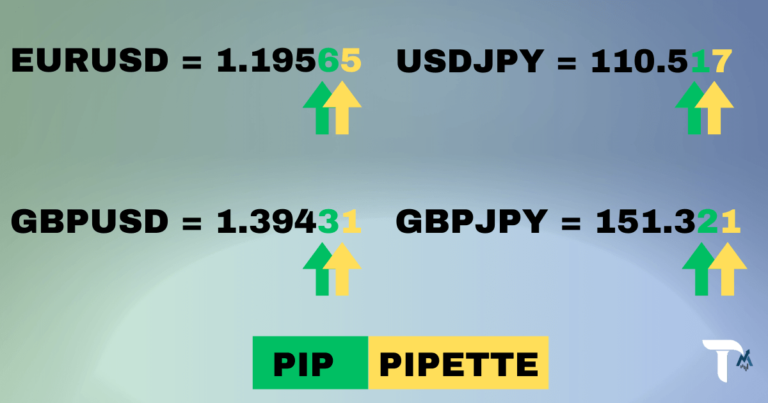
To calculate pips, the difference between the entry and exit prices of a trade is measured. For currency pairs that quote in four decimal places, a one-pip movement is equal to 0.0001. However, for currency pairs that quote in five decimal places, a pipette represents one-tenth of a pip, with a value of 0.00001. By multiplying the pip value by the number of pips gained or lost, traders can determine their monetary profit or loss.
Understanding the Basics of Forex Trading
Before diving deeper into pips, it’s essential to grasp the fundamentals of forex trading. Forex, short for foreign exchange, is the decentralized market where participants buy, sell, and exchange currencies. It operates 24 hours a day, five days a week, across different time zones, making it the largest and most liquid financial market globally. Forex trading involves speculating on the price movements of currency pairs, aiming to profit from fluctuations in exchange rates.
What is Forex Trading?
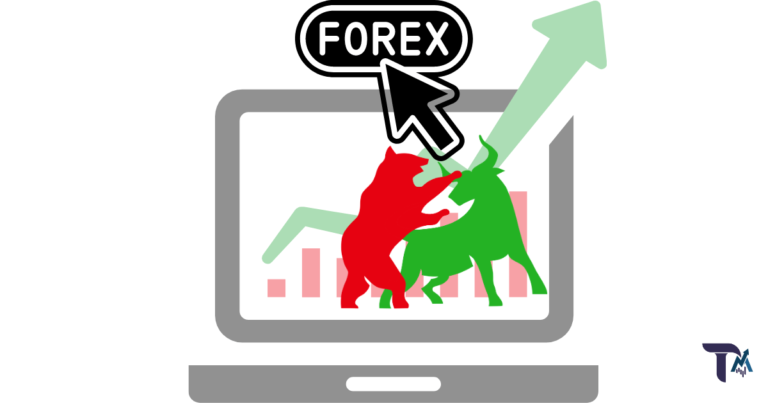
Forex trading involves buying one currency and simultaneously selling another, capitalizing on the exchange rate differences between them. Currency pairs are traded on the forex market, and each pair consists of a base currency and a quote currency. For instance, in the EUR/USD pair, the euro is the base currency, and the U.S. dollar is the quote currency. The objective of forex trading is to speculate on whether the value of the base currency will rise or fall relative to the quoted currency.
Currency Pairs and Exchange Rates
Currency pairs are categorized into three main types: major pairs, minor pairs (also known as cross pairs), and exotic pairs. Major pairs include the most traded currencies, such as EUR/USD, GBP/USD, and USD/JPY. Minor pairs consist of currencies other than the U.S. dollar, such as EUR/GBP or GBP/JPY. Exotic pairs involve one major currency and one currency from an emerging or less frequently traded economy.
The exchange rate represents the value of one currency about another and fluctuates based on various factors such as economic indicators, geopolitical events, and market sentiment. Forex traders closely monitor exchange rates to identify potential trading opportunities and make informed decisions.
Role of Forex Brokers
Forex brokers play a pivotal role in facilitating forex trading for individuals and institutions. They provide traders with access to the forex market, offer trading platforms, execute trades, and provide leverage, allowing traders to control larger positions with smaller amounts of capital. It’s crucial to choose a reputable and regulated forex broker to ensure a secure and transparent trading environment.
Exploring Pips in Forex Trading in Detail?
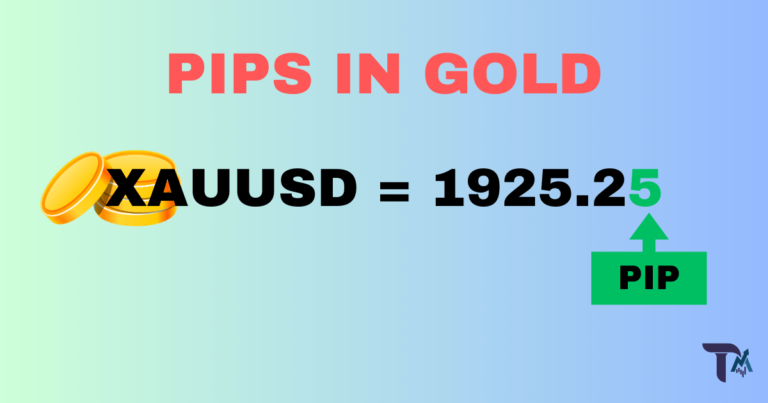
Now that we have established a foundation, let’s explore pips in greater detail. Understanding how pips measure price movements, the difference between pips and pipettes, and calculating pip values will enable you to navigate the forex market with confidence and precision.
How Pips Measure Price Movements?
Pips serve as a quantifiable measure of price movements in the forex market. As mentioned earlier, a pip represents the smallest incremental change in the exchange rate of a currency pair. The value of a pip corresponds to the fourth decimal place in most currency pairs. For example, if the GBP/USD pair moves from 1.4000 to 1.4001, it has experienced a one-pip increase.
Difference Between Pips and Pipettes
In certain currency pairs, especially those involving the Japanese yen (JPY), pips are expressed with two decimal places instead of four. For instance, if the USD/JPY pair moves from 110.00 to 110.01, it has experienced a one-pip increase. However, some brokers offer fractional pip quotes, known as pipettes, which represent a fifth decimal place. Thus, a movement from 110.000 to 110.001 would signify a one-pipette increase.
Calculation of Pip Value
To calculate the monetary value of a pip, several factors come into play, including the currency pair being traded, the trade volume, and the account currency. The formula to calculate pip value is:
Pip Value = (Pip in decimal places / Current Exchange Rate) * Trade Volume
For example, if you are trading the EUR/USD pair with a standard lot size of 100,000 units and the current exchange rate is 1.2000, the pip value can be calculated as:
(0.0001 / 1.2000) * 100,000 = $8.33
This means that each pip movement in this trade would result in a gain or loss of $8.33.
Major Currency Pairs and Their Pip Values
The pip value varies across different currency pairs due to variations in exchange rates and pip calculations. Major currency pairs, such as EUR/USD, GBP/USD, and USD/JPY, tend to have a fixed pip value. For instance, the pip value for the EUR/USD pair is $10 for standard lot sizes. On the other hand, minor and exotic currency pairs may have different pip values due to their unique characteristics and lower liquidity.
Factors Affecting Pip Movement
Several factors influence pip movements in the forex market. By understanding these factors, traders can better comprehend the dynamics of pips and make informed trading decisions.
Market Volatility and Pip Fluctuations
Volatility refers to the extent of price fluctuations in the forex market. Higher volatility often leads to larger pip movements, providing potential opportunities for greater profits or losses. Economic events, geopolitical developments, and market sentiment can significantly impact market volatility and consequently affect pip fluctuations. It’s crucial to stay updated on market conditions and adjust trading strategies accordingly.
Economic Indicators and Pip Impact
Economic indicators, such as GDP (Gross Domestic Product), inflation rates, and employment data, play a crucial role in influencing pip movements. Positive or negative economic releases can lead to significant market reactions and subsequent pip fluctuations. Traders closely monitor economic calendars and assess the potential impact of upcoming indicators on currency pairs of interest.
News Events and Pip Spikes
News events, such as central bank announcements geopolitical developments, or unexpected economic data releases, can trigger sharp pip spikes in the forex market. These sudden movements can provide lucrative trading opportunities but also carry increased risk. Traders must exercise caution and implement risk management strategies to navigate such volatile periods successfully.
Trading Sessions and Pip Variations
Forex trading is not confined to a single geographical location. Instead, it operates across different trading sessions, including the Asian, European, and American sessions. Pip variations can occur based on the liquidity and trading volume during specific sessions. For example, during the overlap of the European and American sessions, increased trading activity may result in higher pip movements.
Different Types of Forex Quotes
Forex quotes represent the bid and ask prices of currency pairs, indicating the price at which traders can buy or sell a specific currency. Understanding the different types of forex quotes is essential for accurate price analysis and trade execution.
Direct vs. Indirect Quotes
In a direct quote, the domestic currency is the base currency, while in an indirect quote, it is the quote currency. For instance, in the USD/CAD pair, the direct quote would be 1 USD = X CAD, whereas the indirect quote would be 1 CAD = X USD. Direct quotes are more commonly used in most major currency pairs.
Bid and Ask Prices
Forex quotes consist of bid and ask prices, also known as buy and sell prices. The bid price represents the price at which market participants are willing to buy the base currency, while the asking price denotes the price at which they are willing to sell it. The difference between the bid and ask prices is known as the spread, which affects the overall cost of a trade and its profitability.
Spread and its Relation to Pips
The spread plays a crucial role in determining the cost of executing a trade and affects the number of pips needed to break even. Brokers typically earn revenue through the spread by offering slightly different bids and asking prices to traders. Narrow spreads are favourable for traders as they minimize trading costs, allowing for more efficient profit generation.
Leverage and Pip Profitability
Leverage is a key feature of forex trading that enables traders to control larger positions with a smaller amount of capital. While leverage amplifies potential profits, it also magnifies losses. Understanding the impact of leverage on pip profitability is crucial for effective risk management and trade planning.
Understanding Leverage in Forex Trading
Leverage is expressed as a ratio and determines the amount of capital a trader can control relative to their investment. For instance, a leverage ratio of 1:100 means that for every dollar invested, the trader can control $100 in the market. This allows traders to trade larger positions than their account balance would otherwise permit.
Impact of Leverage on Pip Value and Profits
Leverage affects the pip value and potential profits or losses in a trade. Higher leverage magnifies the pip value, meaning each pip movement has a more significant impact on the trader’s account balance. It is crucial to consider the chosen leverage ratio and its potential consequences before entering trades, as it directly influences risk exposure.
Managing Risk with Proper Leverage Usage
While leverage provides opportunities for increased profits, it also introduces higher risk. It is essential to use leverage prudently and manage risk effectively to protect capital and avoid excessive losses. Risk management techniques, such as setting appropriate stop-loss levels, maintaining a favourable risk-to-reward ratio, and avoiding overleveraging, are essential for long-term trading success.
Using Pips in Position Sizing and Risk Management
Position sizing and risk management are critical components of a well-defined trading strategy. By utilizing pips effectively, traders can determine the appropriate trade volume, establish risk-reward ratios, and implement effective risk management practices.
Determining Trade Volume based on Pips
Pips play a significant role in determining the appropriate trade volume based on risk tolerance and desired pip targets. By considering factors such as account size, risk appetite, and stop-loss levels, traders can calculate the ideal trade volume to align with their risk management objectives. This ensures that potential losses are controlled and account preservation is prioritized.
Risk-to-Reward Ratio and Pip Targets
The risk-to-reward ratio is a crucial concept in risk management that compares the potential reward of a trade to the potential loss. By identifying favourable risk-to-reward ratios, traders can set realistic pip targets that align with their trading strategy. Establishing appropriate pip targets ensures that potential profits outweigh potential losses, increasing the probability of overall profitability.
Stop Loss Placement and Pip Tolerance
Stop-loss orders are essential risk management tools that define the maximum acceptable loss for a trade. Placing stop loss orders at appropriate levels, taking into account market volatility and pip fluctuations, ensures that potential losses are contained within predefined risk tolerances. Effective stop-loss placement minimizes emotional decision-making and promotes disciplined trading.
Pips in Different Trading Strategies
Different trading strategies rely on pips to varying degrees. Understanding how pips play a role in scalping, day trading, swing trading, and carry trading can help traders align their strategies with their preferred trading styles and goals.
Scalping Strategies and Focus on Pips
Scalping is a short-term trading strategy that aims to profit from small price movements. Scalpers rely heavily on pips, seeking to capture quick profits from multiple trades throughout the day. By executing high-frequency trades and focusing on tight spreads and low-latency execution, scalpers aim to accumulate small gains that, over time, can lead to significant profits.
Day Trading and Profiting from Intra-day Pip Movements
Day trading involves opening and closing trades within a single trading day, aiming to capture intraday pip movements. Day traders analyze technical indicators, chart patterns, and market trends to identify potential trading opportunities. By leveraging pips in conjunction with their trading strategies, day traders seek to generate profits while minimizing exposure to overnight market risks.
Swing Trading and Larger Pip Gains
Swing trading is a medium-term trading strategy that aims to capture larger price movements over several days to weeks. Swing traders capitalize on market swings to accumulate accumulating substantial pip gains. By combining technical analysis, support and resistance levels, and other indicators, swing traders identify potential entry and exit points, maximizing pip profitability.
Carry Trading and Pips as Interest Income
Carry trading is a long-term strategy that involves profiting from interest rate differentials between currency pairs. In carry trades, traders aim to earn the interest rate differential by holding a high-yielding currency while simultaneously selling a lower-yielding currency. Pips play a vital role in determining the potential income generated from the interest rate spread.
Pip-Related Trading Tools and Indicators
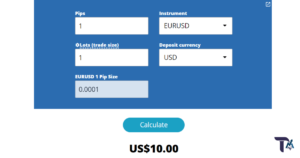
Various trading tools and indicators assist traders in analyzing pips, tracking pip movements, and making informed trading decisions. These tools provide valuable insights into pip volatility, position sizing, and market trends.
Pip Calculators and Position Size Calculators
Pip calculators are online tools that help traders determine the value of pips, taking into account currency pairs, trade volumes, and account currencies. These calculators provide quick and accurate pip value calculations, enabling traders to make informed decisions and effectively manage risk. Position size calculators assist traders in determining the appropriate trade volume based on desired risk levels and pip targets.
ATR (Average True Range) Indicator for Pip Volatility
The Average True Range (ATR) indicator is a popular tool for measuring volatility in the forex market. By analyzing historical price data, the ATR indicator provides insights into pip volatility, helping traders determine potential stop-loss levels, position sizes, and overall trade
Risk: Traders can adjust their strategies based on market conditions and adapt to changing pip movements.
Pip Value Indicators for Real-Time Pip Tracking
Pip value indicators provide real-time information on pip movements and allow traders to track pip values across multiple currency pairs simultaneously. These indicators display pip changes visually, providing insights into the strength and direction of price movements. By monitoring pip values, traders can identify potential trading opportunities and make timely decisions.
Mastering Pip Analysis
Effective pip analysis is crucial for identifying key price levels, confirming trends, and making informed trading decisions. By understanding how pips can be utilized in conjunction with other technical analysis tools, traders can enhance their trading strategies and increase the accuracy of their predictions.
Identifying Support and Resistance Levels Using Pips
Support and resistance levels are significant price levels where buying or selling pressure may cause price reversals. By analyzing historical price movements and identifying key support and resistance levels based on significant pip levels, traders can anticipate potential price reactions and adjust their trading decisions accordingly.
Trend Analysis and Pip Confirmation
Trend analysis is a fundamental aspect of technical analysis that helps traders identify the overall direction of price movements. By incorporating pips into trend analysis, traders can confirm the strength of trends and determine potential entry and exit points. Pips act as confirmation signals, adding an extra layer of confidence to trend analysis.
Fibonacci Retracement and Extension Levels with Pips
Fibonacci retracement and extension levels are derived from the Fibonacci sequence, a series of numbers where each number is the sum of the two preceding numbers. Using pips in conjunction with Fibonacci levels, traders can identify potential support and resistance levels, project price targets, and determine optimal entry and exit points. The application of pips in Fibonacci analysis enhances precision and accuracy.
Pips in Conjunction with Other Trading Concepts
Pips can be effectively combined with various other trading concepts to enhance decision-making and increase the probability of profitable trades. By integrating pips with moving averages, candlestick patterns, and oscillators, traders can refine their analysis and generate more robust trading signals.
Moving Averages and Pips as Confirmation
Moving averages are widely used technical indicators that smooth out price data and identify trends. By combining moving averages with pips, traders can use pips as confirmation signals for potential trend reversals or continuations. Pips serve as additional confirmation when the price crosses above or below specific moving average levels.
Candlestick Patterns and Reversal Pips
Candlestick patterns provide valuable insights into market sentiment and potential price reversals. By incorporating pips into candlestick pattern analysis, traders can identify reversal signals that occur at significant pip levels. These reversal pips add weight to the reliability of candlestick patterns, helping traders make more accurate predictions.
RSI and Stochastic Oscillator for Pip Momentum
The Relative Strength Index (RSI) and Stochastic Oscillator are popular momentum indicators that help traders identify overbought and oversold conditions in the market. By incorporating pips into RSI and Stochastic Oscillator analysis, traders can gauge the strength of price movements and anticipate potential reversals or continuations. Pips provide valuable context for interpreting momentum signals accurately.
Common Pitfalls and Challenges with Pips
While pips serve as valuable tools in forex trading, it’s essential to be aware of common pitfalls and challenges associated with their usage. By understanding these potential pitfalls, traders can navigate the market more effectively and mitigate risks.
Overemphasis on Pips vs. Overall Strategy
One common mistake traders make is overemphasizing pips at the expense of a comprehensive trading strategy. While pips play a crucial role in determining profits or losses, a well-defined strategy that incorporates risk management, technical analysis, and fundamental analysis is equally important. It’s essential to view pips as part of the broader trading picture and avoid solely chasing pip gains without a solid strategy.
False Pip Signals and Fake Breakouts
The forex market is prone to false signals and fake breakouts, which can lead to erroneous pip analysis. Traders must exercise caution and use additional confirmation tools to validate pip movements and trading signals. Combining pips with other technical indicators and conducting thorough analysis helps filter out false signals and increase the accuracy of trades.
Emotional Trading and Overreacting to Small Pip Movements
Emotional trading, driven by fear or greed, can lead to impulsive decisions based on minor pip movements. It’s crucial to maintain discipline and avoid overreacting to small fluctuations. By focusing on the overall trading plan, risk management, and long-term profitability, traders can overcome emotional biases and make rational trading decisions.
Conclusion
What are pips in forex trading? Pips are the backbone of forex trading, serving as a vital tool for measuring price movements and determining profitability. Understanding the definition of pips, their importance in forex trading, and how they are calculated lays the foundation for successful trading. By exploring the basics of forex trading, delving into the intricacies of pips, and examining their relation to various aspects of trading, traders can develop a comprehensive understanding of pips and leverage them effectively in their strategies. Remember, mastering pip analysis, and using appropriate risk management techniques, is key voiding common pitfalls is key to utilizing pips efficiently and achieving long-term trading success.

